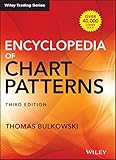
Sentiment: Bearish
Direction: Reversal
What Is The Head And Shoulders Chart Pattern?
A Head and Shoulders is a bearish reversal pattern, most commonly found at the top of a trend.
The pattern consists of a lower peak acting as the left shoulder, a larger peak acting as the head, and another lower peak roughly around the same height as the first shoulder, acting as the right shoulder.
The neckline of the pattern acts as support.
How To Identify The Head And Shoulders Pattern?
Price action forms the shape of a head atop two shoulders, with three total peaks.
The left shoulder and first peak is formed on high volume. Volume begins to decline with a higher peak forming a head. Finally, a right shoulder of roughly equal height as the left shoulder is formed.
The pattern is confirmed with a close below neckline support.

What Is The Psychology Behind The Head And Shoulders Pattern?
The Head and Shoulders pattern is a bearish chart pattern that can provide traders with valuable insights into the market’s psychology.
It’s characterized by a peak (the head) between two smaller peaks (the shoulders), with a neckline connecting the lows of the two shoulders.
The pattern typically takes several weeks or months to form and is a sign of a potential trend reversal.
Traders interpret the pattern as a sign of exhaustion, where buyers are no longer able to push the price higher, and sellers are gaining momentum.
The psychology behind the head and shoulders pattern is that there is a tug of war between buyers and sellers.
The left shoulder represents a failed attempt by buyers to push the price higher, followed by a temporary pullback. The head represents another attempt by buyers to push the price higher, which is again followed by a pullback. Finally, the right shoulder represents a weaker attempt by buyers to push the price higher. This is then followed by a more significant pullback.
Traders view the pattern as a sign that the buyers are losing their grip on the market, and sellers are gaining momentum.
Once the price breaks below the neckline, it’s a signal that the trend has reversed, and traders may enter short positions.
How To Trade The Head And Shoulders Pattern?
To trade the Head and Shoulders pattern, traders typically wait for the price to break through the neckline with a strong volume surge.
The breakdown should ideally occur on higher than average trading volume. This confirms that there is significant selling pressure behind the move.
Traders may enter a short position once the price breaks below the neckline. A stop loss is placed above the right shoulder.

Alternatively, traders may wait for a pullback to the neckline before entering a short position. This approach can provide a better risk-to-reward ratio, as the entry price is closer to the neckline and the stop loss can be placed tighter.
However, it may also result in missing out on some of the initial gains from the breakout. Ultimately, the best approach will depend on the trader’s risk tolerance, trading style, and market conditions.
It’s worth noting that the head and shoulders pattern can also result in a false breakdown. In this situation, price briefly breaks through the neckline before reversing course.
Traders should be aware of this possibility. Also be sure to use technical indicators and other tools to confirm the validity of the breakout. Access these tools at TradingView.
Head And Shoulders Performance Expectations Explained
A bearish reversal is expected the majority of the time.
To find potential targets, measure from the neckline to the highest peak forming the head.
Project the measurement multiplied by 51% to the neckline.


